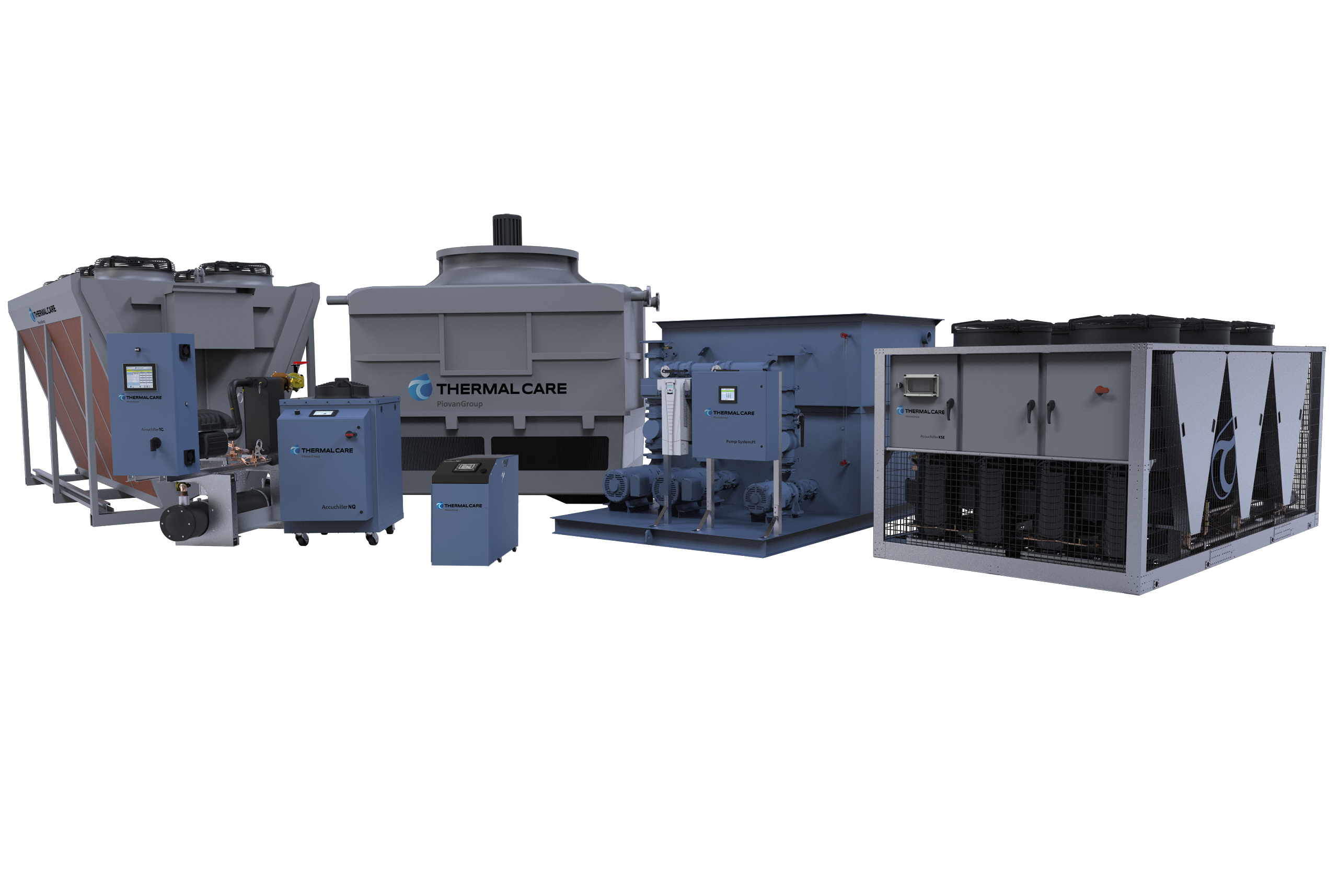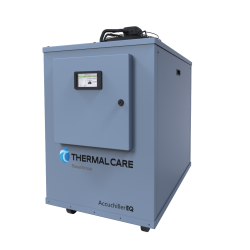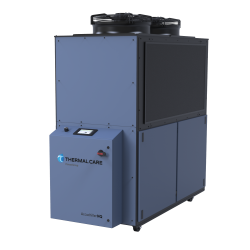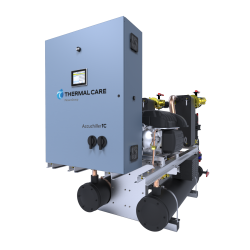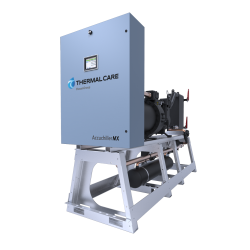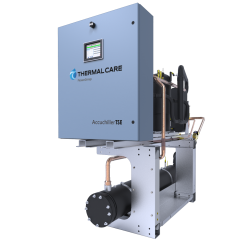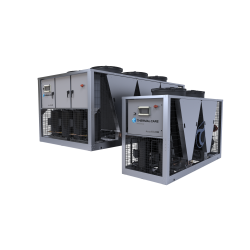Why Air Cooled vs Water Cooled Chillers?
Conventional thinking has been that water-cooled chillers are more efficient than air-cooled compressors. If we only look at compressor costs, this may be true. However, with state-of-the-art technology using centrifugal compressors with variable speed control, air-cooled chillers are often the better choice.
Consider the total operating cost of a system.
It is important to look at the total operating costs involved with the chillers, not just the compressor costs. As the graphic indicates cooling tower operating costs should be added to the operating costs of water-cooled chillers. A cooling tower system’s costs include the tower fan, water and sewer costs, chemical costs and pumping costs. In process applications, tower systems generally have process pumps and recirculation pumps which can add a significant cost. The illustration compares the operating cost of an air-cooled variable speed centrifugal chiller versus a water-cooled screw chiller. This comparison is based upon a 140-ton load, Chicago weather data, $.07/kWh electrical costs, $5.00/1000 gallon water, and sewer costs, and 6,000 hrs/year operation.
Because the air-cooled chiller uses floating head pressure control, the compressor energy costs are actually less than the water-cooled chiller’s compressor costs—a $4,757 difference. Adding the tower system’s operating cost of $17,428 results in a $22,185/year operating cost savings. A more efficient variable speed water-cooled centrifugal chiller reduces the cost difference to $16,725—still a significant annual cost penalty.
For a detailed evaluation of your specific application, please contact Thermal Care.




